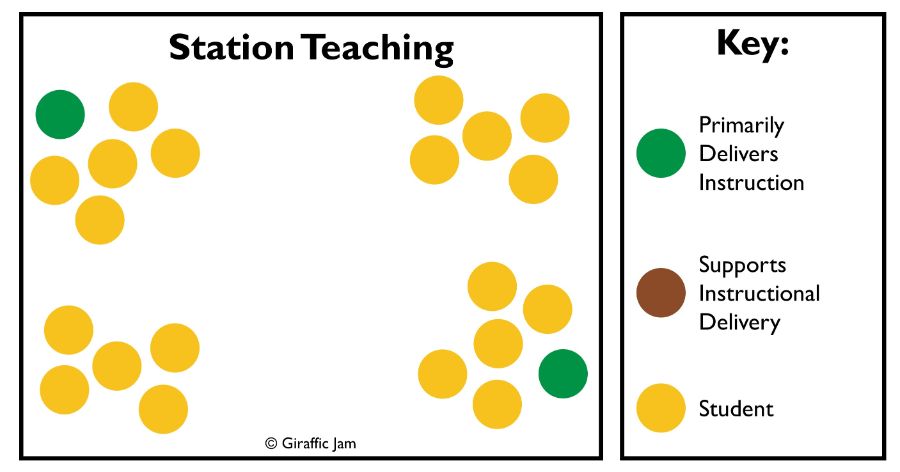
Station teaching is a great co-teaching strategy to try. It might require extra planning, but is a very engaging way to teach. Station teaching is when students rotate between different stations and complete a different activity or lesson at each station.
There are six different types of co-teaching. No matter which of the types of co-teaching you use, you and your co-teacher can be highly effective instructors when you work together to plan and deliver lessons. Co-teaching works, because it involves two adults actively working together to provide instruction.
Simply put, co-teaching is when two adults work together to teach a lesson. Notice, I say ‘adults’ not teachers. Why? It’s simple really, it could be two teachers. Or, it could be an intern and a teacher. Or, a substitute and a teacher… An instructional assistant and a teacher… A substitute and an instructional assistant. Or…..
Well, I guess you get where I’m going with this. However, old habits die hard so throughout this post you’ll see me refer to the adults as ‘teachers’. Just don’t limit yourself to thinking of teachers only in the traditional sense!
Don’t be limited to thinking that co-teaching is always a gen ed teacher and a special education teacher. It can be, but it doesn’t have to be. If you think outside the box, you might find that you have more opportunities for co-teaching than you realize!
Station teaching is using small groups to teach a concept. Typically, you will have between 3-5 different stations. Each student rotates to each center. Even though the topics or themes are the same, each station should offer a different instructional experience. Some stations may be independent work stations, technology stations, or a cooperative learning game.

When station teaching, students rotate between a set number of groups. All stations should be based around the same topic or concept.
Small groups! I mean seriously, anytime you can limit your student to teacher ratio is almost a guaranteed win for the classroom. Students get to see several different lessons or strategies and engage with the material in multiple ways. This is a great way to work in different types of learners, maybe one of the stations has an auditory focus and the other is more hands on. This allows everyone several opportunities to see the material!
Honestly, in my building, scheduling. This strategy heavily (entirely?) relies on having everyone in the room when they are supposed to be. Almost every other method of co-teaching can quickly be adapted if the second teacher gets pulled to cover a class. However, this one really requires all adults to be in the room, as scheduled.
Co-Teaching can be hard. If you’re looking for more information, check out this blog post to read some of my favorite tips and tricks for getting the ball rolling!
Co-teaching is an effective tool for reaching all of your learners. It allows both teachers the opportunity to see students and their progress. When you use parallel teaching as your co-teaching method, it gives the students the chance to see the lesson in a smaller group setting. Did you know there are five other types of co-teaching? Check them out here!